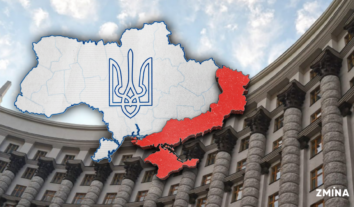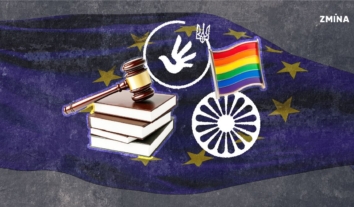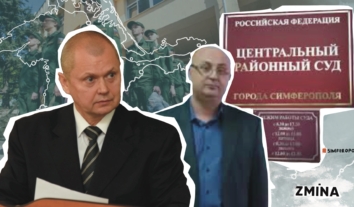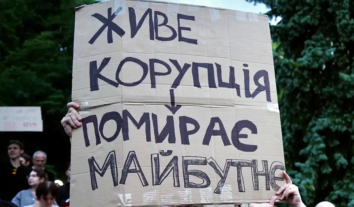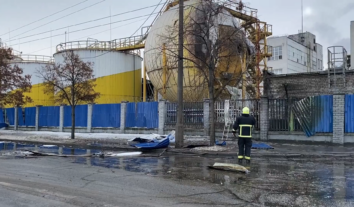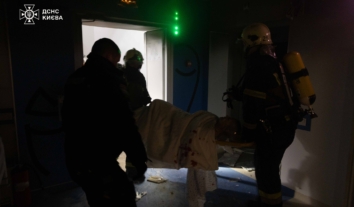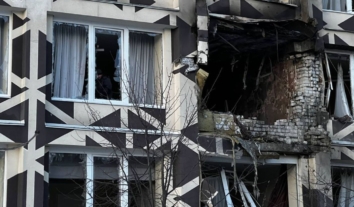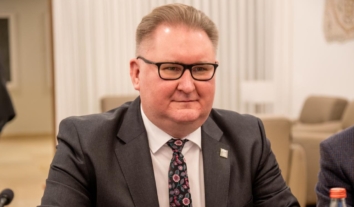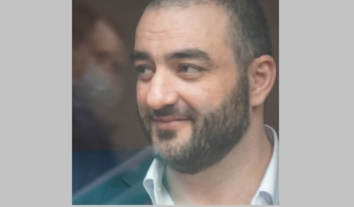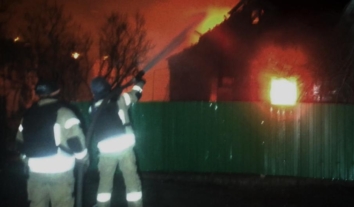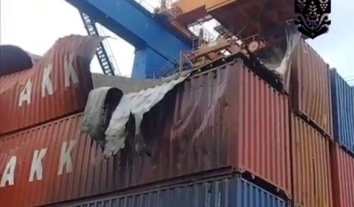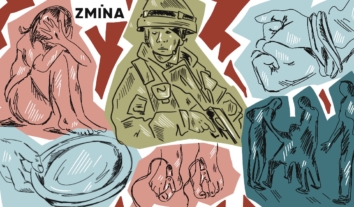Evacuation under fire: how volunteers work in the frontline areas in Ukraine
Fighting has been going on for two weeks in the north of Kharkiv region, with the most severe fighting in Vovchansk and surrounding villages. Since May 10, Russian troops have been trying to enter the settlements that the Ukrainian Armed Forces liberated in the fall of 2022. To prevent residents from being occupied again, local authorities, together with the police and volunteers, are conducting a mandatory evacuation of civilians.
The security situation in cities and villages is changing every minute. Evacuations are being carried out with the humanitarian center and local police. Nevertheless, two volunteers went missing in the frontline town of Vovchansk. According to local authorities, they went to the field on their own and probably fell into a Russian ambush. There is currently no confirmed information about what happened to them.
The Proliska humanitarian mission operates in such conditions – constant shelling, repeated arrivals at evacuation sites, and crowds of civilians. A team of activists and volunteers has been helping people leave the frontline areas for the last ten years. During the full-scale invasion, the organization grew to 500 people with offices in 13 cities and dozens of volunteers.
The mission’s branded humanitarian buses, the organization’s frontline offices, and the volunteers themselves are targeted by Russian troops at the very moment when they are assisting the victims. For example, last year, while the volunteers were transporting 36 residents of the frontline de-occupied village of Kozacha Lopan in the Kharkiv region, Russians fired artillery at a humanitarian mission bus. In April 2024, a Russian kamikaze drone attacked a social bus with 16 passengers near the village of Zolota Balka in the Kherson region.
What is it like to work on the contact line and help the locals while risking your life? ZMINA talked to Yevhen Kaplin, head of the Proliska humanitarian mission.
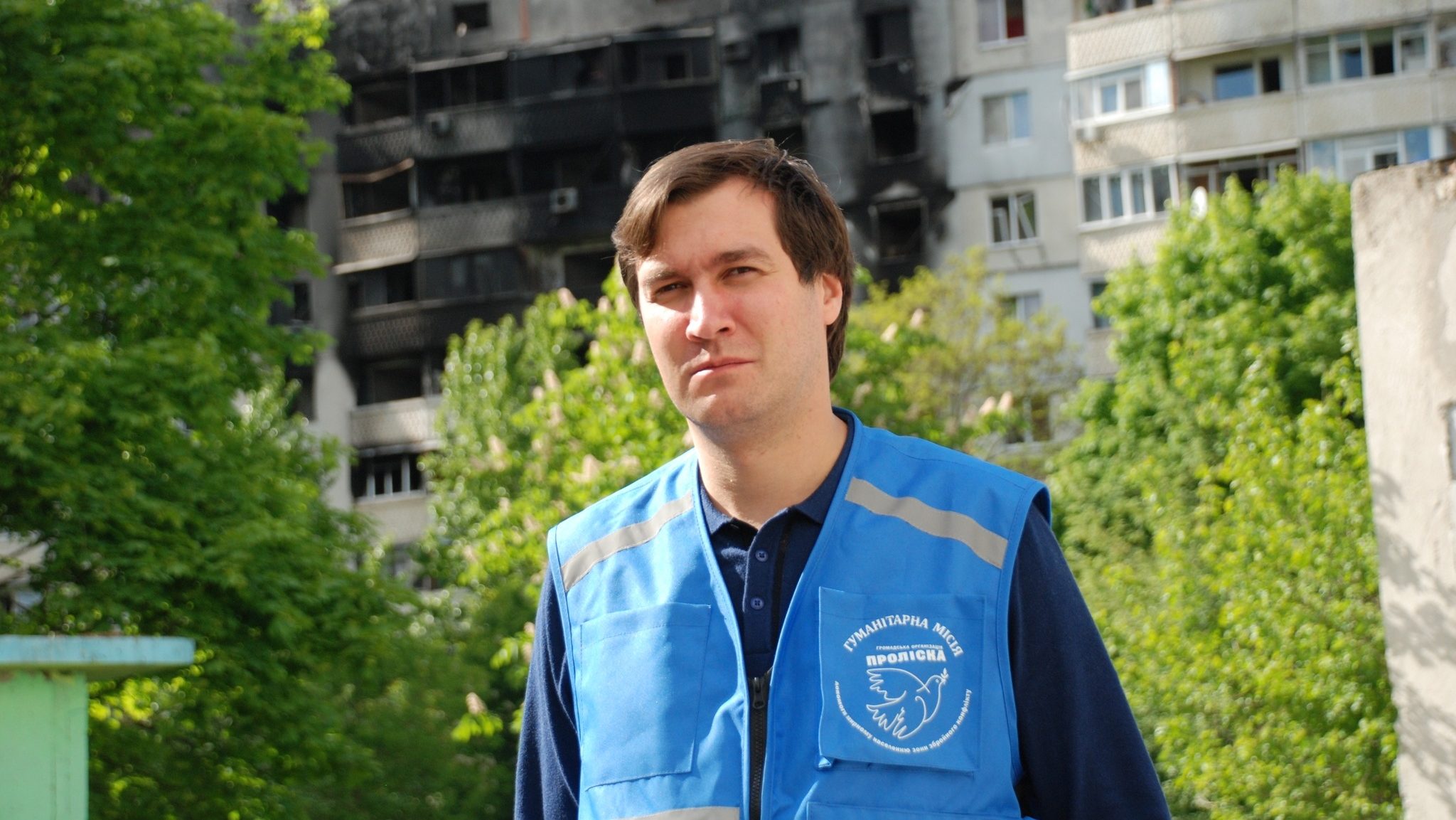 Yevhen Kaplin is the head of the Proliska humanitarian mission. Photo: Kaplin’s Facebook page
Yevhen Kaplin is the head of the Proliska humanitarian mission. Photo: Kaplin’s Facebook pageAfter May 10, all resources were used to evacuate the Vovchansk community
Let me start with an urgent issue. These days, your organization’s volunteers, together with local authorities and the police, are evacuating civilians from the northern Kharkiv region. Could you tell us about the evacuation process and how many people your volunteers have evacuated so far?
Evacuations are currently underway not only in the northern part of the Kharkiv region but also in Donetsk, northern Sumy, and two other areas where the conflict has been escalating since May 9. Since the beginning of the full-scale invasion, our mission has managed to evacuate more than 26,000 people. In May this year, we evacuated 637 people.
I want to say that people evacuate from the Donetsk region almost every day. After the capture of Maryinka, the front line moved much closer to the town of Kurakhove. Our evacuation bus to Dnipro runs there every day. On May 13, the fighting also intensified in the north of Sumy region, and on May 14, the bus evacuated 22 people from there. Since May 10, active fighting and shelling have occurred in the Kharkiv region. The local coordinator of our office says that she has received dozens of calls from people from the Vovchansk community from Liptsy. As for Vovchansk, people told us that they had never experienced such targeted shelling. On the morning of May 10, we mobilized all our resources: small cars, ambulances, and cargo trucks.
Do your volunteers persuade people to leave?
In the Kharkiv region, this is the case when people want to leave on their own. These communities were already occupied by Russian forces in the first days of the war on February 24 and were liberated only in the fall of 2022. People have experience of Russian occupation. They returned home after the occupation because they thought it would not happen again. However, the contact line has shifted, and most people realize they need to leave. Our team was the first to enter the communities with humanitarian aid after the de-occupation. Every day we flew in, houses were being destroyed, and people turned to us for help rebuilding their homes, psychological assistance, hygiene kits, and food. Our social bus also runs there so people can travel from frontline villages to district and community centers.
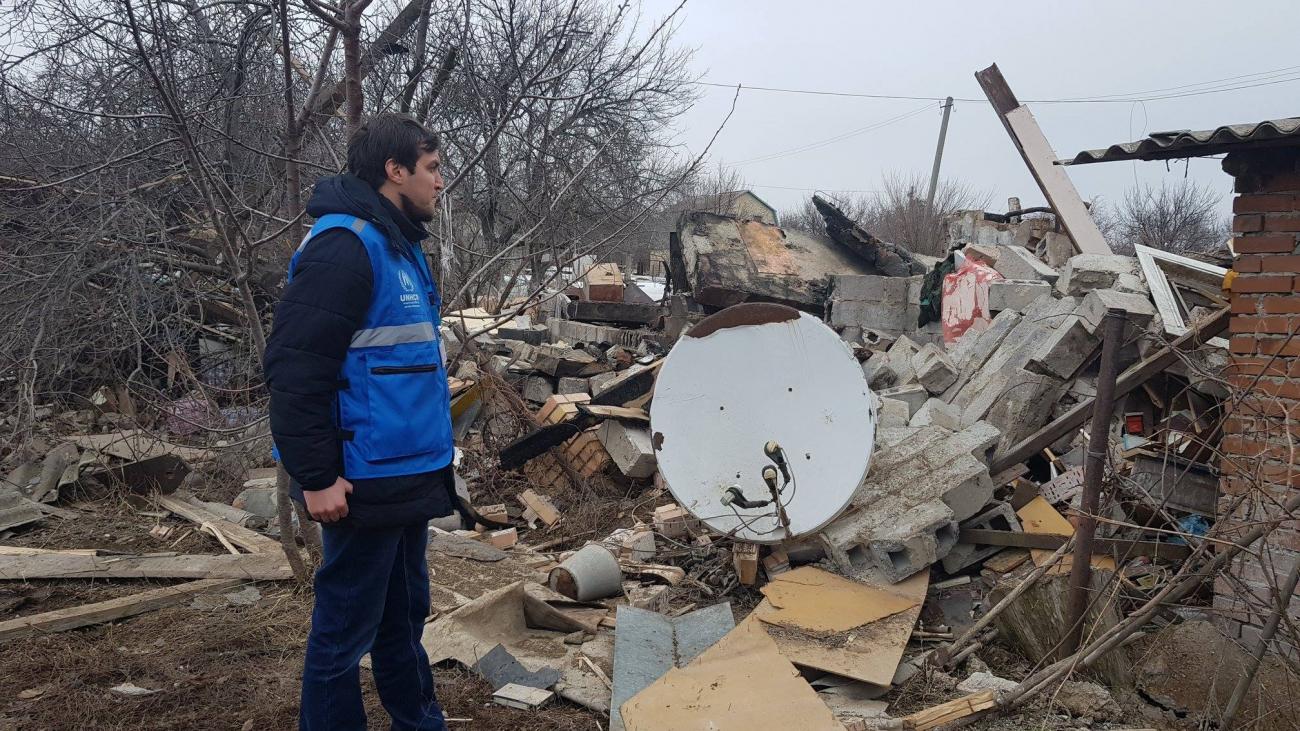 Photo: Facebook page of the humanitarian mission
Photo: Facebook page of the humanitarian missionOn May 14, the Vovchansk community lost communication. If there was coordination in the first days, after May 14, it became more complicated, and we took people we just saw on the street. Russian subversive groups are now working in certain villages, so it is dangerous to work without coordination with the Ukrainian authorities. We know of cases when volunteers disappeared, and most likely, the Russians took their cars and started using them for their purposes.
The car of the volunteers who disappeared near Vovchansk is probably already being used by the Russian military
I cannot avoid mentioning two volunteers who went missing in the Vovchansk community. According to the Kharkiv police and the military administration, the volunteers did not coordinate their routes with the Ukrainian authorities. So they went to the north, not knowing there were active battles. In your experience, how should volunteers work in frontline areas to not endanger themselves and others?
Yes, these volunteers did not coordinate their activities with the Kharkiv Coordination Center or the military administration, which is probably why these circumstances occurred.
In this offensive, Russian troops have begun to use very insidious tactics. They go to local residents, take their phones, enter the right number and then force people to tell volunteers that there are no Russians in their area and they need to be evacuated immediately. This is how they lure volunteers out. I think a similar situation just happened with the Kyiv volunteers who went missing.
According to my information, the Russian military is already using the cars of those volunteers. And I’m talking about this because we had a similar case. A resident called the personal cell phones of our employees – the transportation coordinator and the head of the office – and asked to be taken out of a particular street in Vovchansk. We checked this request and realized that the area where the person was located was already occupied and that this was the case when our car and our employees were being lured away on purpose.
Recently, we had a case when we were picking up people in Vovchansk, and a Russian subversive group was spotted 30 meters away. There was shooting. And it was very good that we had police with us. Thanks to this, we managed to stay alive and not get captured.
Your team of volunteers, your offices at the border, and the buses of your humanitarian missions have been repeatedly fired upon by Russian troops. There were more than 50 such incidents during the full-scale invasion. Would you share about them?
I would say that since the full-scale invasion, there have been 52 such cases. However, even before the big war, we also came under fire many times while working in the Donetsk region. Before, we mostly came under fire in a certain dangerous square. Now, the Russians are targeting our employees.
We have become targets, our homes and vehicles are being shelled. This is especially brazen when the Russian army sees the humanitarian markings and realizes that this is help for civilians, that this is a humanitarian mission Proliska.
For example, I was shell-shocked in March 2022 when I was traveling with people in a car in Kharkiv, and there was an attack at that moment. The last incident was a week and a half ago in the Kherson region when a kamikaze drone attacked our special humanitarian bus, which was carrying people from frontline villages to the center of the community. With the war, buses stopped running, and people had to solve their problems in the Administrative Service Centers, for example, withdraw their pensions or buy something. At that time, we were carrying 16 passengers to solve all their issues. The bus was white with a sign “Social Transport”, the Humanitarian Fund for Ukraine logo, and the Proliska humanitarian mission logo. The kamikaze drone launched a frontal attack on this bus. After that, a passenger called me and asked me to write out a “hero” for our driver because he maneuvered within half a meter, and everyone was safe and sound. The drone hit the bus with its wing and exploded on impact with the asphalt behind it. If the kamikaze drone had flown inside the bus, there would have been 16 dead.
I can also recall an episode in the Kharkiv region. There was an arrival, and our employees arrived at the scene. When they were distributing building materials to pensioners, the mission was attacked by a Russian drone. Its operators must have seen a large UN banner, the UN Refugee Agency banner, our large logo on the car, civilian grandparents, and the drone fired 12 shots from an 82-mortar. The first mine hit the house. Fortunately, it did not hit the open area where the grandparents and three of our employees were standing. Just because the mine came through the roof into the house, knocked out the wall, and hit our driver on the head with a brick, the team had time to run to the cellar. That’s how everyone survived. Then, every 5-6 minutes, the Russians launched new mines into this square. The target of the attack was explicitly our bus, which brought construction materials for these injured people. The team and older adults stayed in the cellar for about an hour, and these people were evacuated. At that time, our bus had 82 holes from the shots.
On January 23 this year, Yevhen Tkachev, the head of our office in Donetsk Oblast, was assisting in the town of Chasiv Yar when he saw an FPV drone overhead. He could see that our employee was distributing humanitarian aid. The drone caught the logo of the Proliska humanitarian mission on the roof of the bus and still flew higher. It dropped a mine directly on the bus. Our employee and an old lady jumped away from the bus then.
These events cannot be called accidental. These are targeted attacks on humanitarian organizations to intimidate us, to do everything possible to stop us from working and providing humanitarian aid to people.
There are three types of evacuation – group, individual, and special medical
What types of evacuations do you carry out, and what are the specifics of evacuation depending on the region?
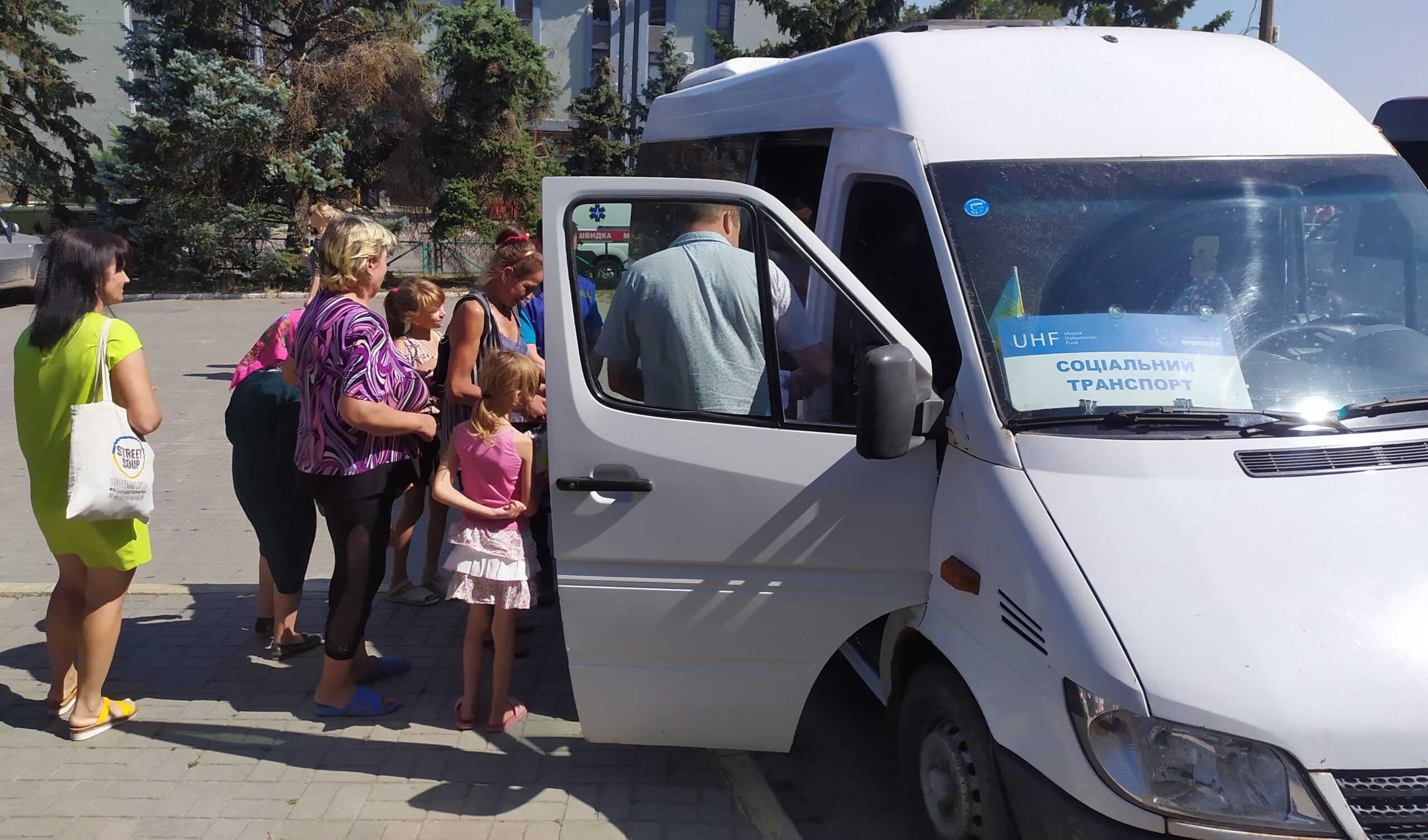 A social bus of the Proliska humanitarian mission. Photo: from the organization’s website
A social bus of the Proliska humanitarian mission. Photo: from the organization’s websiteWe have several types of evacuations: group, individual, and special medical evacuations. In general, we carry out these evacuations in nine regions of Ukraine where fighting occurs.
Currently, we have requests in four regions: Kharkiv, Sumy, Donetsk and southern Dnipro. Group evacuation is a bus transportation when we can take a large group of people. In Donetsk region, for example, our evacuation bus is currently running, taking people from Toretsk, Kurakhiv community, Selydiv community, and some people from Marianske community. Buses run daily, sometimes 2-3 times a day.
Also, if the contact line is closed, we evacuate people in small cars or with the help of special armored vehicles, military services, rescuers, and police to a particular gathering point; from there, our evacuation bus takes people. The main obstacle in such an evacuation is the possibility of the bus being hit because it is prominent and visible. It is also a crowd of people. Our drivers and carriers are trained to act in different situations. Over the past six months, we have changed the locations of passenger boarding 15 times so that the enemy cannot track them. We also conduct briefings with people. For example, we ask them to turn off their phones, not to be in open areas or the air, and not to announce meeting places.
The second type of evacuation is personal trips to pick up people in passenger cars to places where it is pretty dangerous to be, where street fighting may already be taking place.
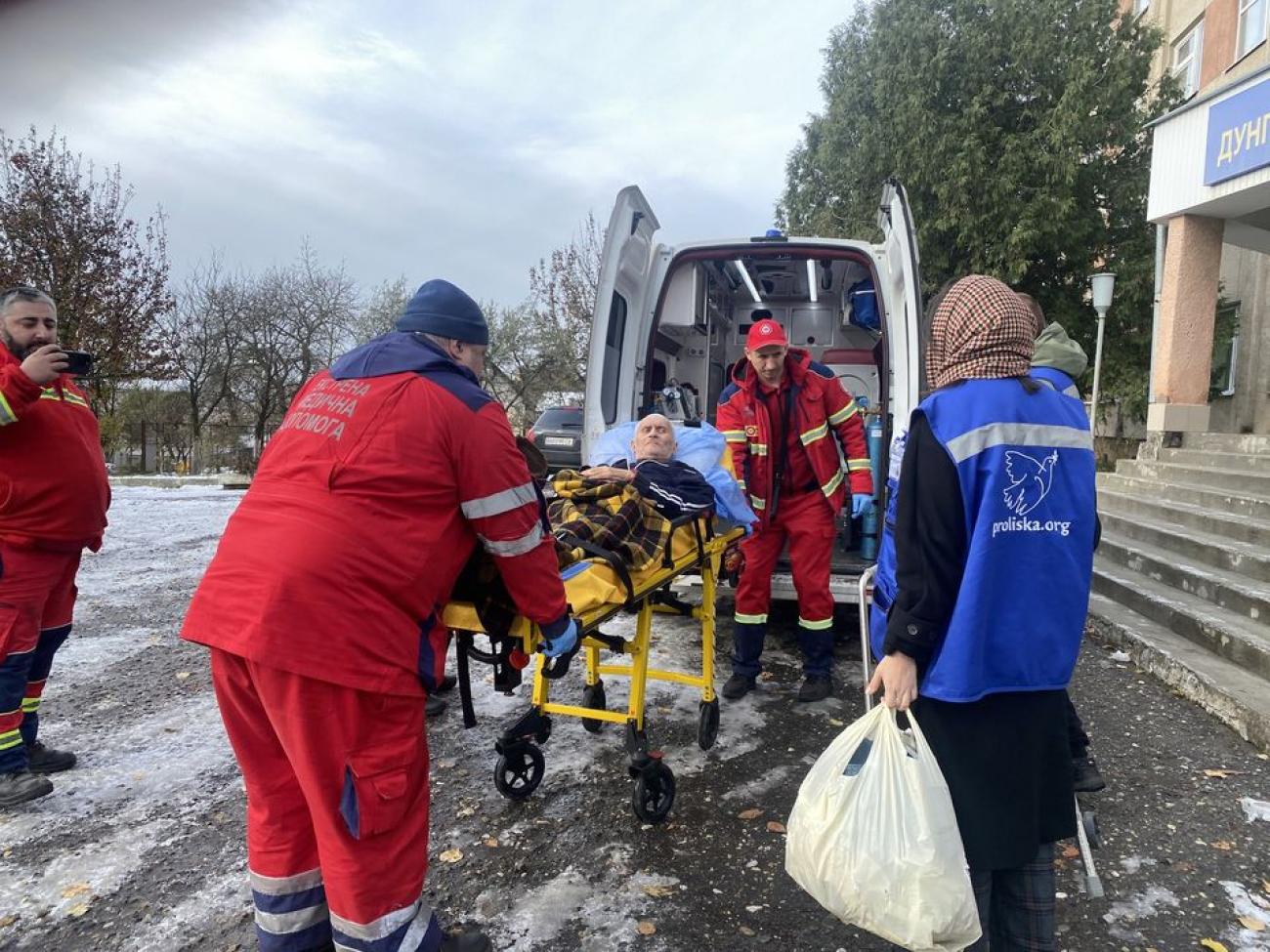 Medical evacuation of the humanitarian mission Proliska. Photo from the organization’s website
Medical evacuation of the humanitarian mission Proliska. Photo from the organization’s websiteThe third type is medical evacuation. A specialized team arrives at a call and transports people in a lying-down position in an ambulance with all the necessary resuscitation equipment. Such evacuations are required for the elderly, the disabled, people with limited mobility, people with serious illnesses, and people injured in the hostilities. There have been several cases of evacuation of pregnant women at 38-39 weeks of pregnancy.
We have evacuated more than 26,000 people to date, and more than 700 needed medical transport and team support. These are complicated and resource-intensive evacuations, but at the same time, they are saving people who would have died without help.
There are families whom we are evacuating for the second time because they returned after the de-occupation
What are the stories of the people you brought out from under fire that stick in your mind the most?
You know, I have a million of these stories in my head. I can just say that recently, we have seen a trend of people leaving again. These are people who, for example, left the Kharkiv region in February 2022 and waited for the liberation of villages and cities. When this happened, they slowly started to return home, and now they are forced to evacuate again for the second time.
One family was a daughter and her father, who was 92 years old. At the beginning of the war, they left for Poltava, and when the city was liberated, they returned. And in January of this year, the Russians launched a missile at their neighborhood, and one of the entrances to their house collapsed. People died, and the girl’s father was paralyzed. She couldn’t even get him down to the basement during the shelling. So they decided to evacuate to Poltava again. And we have already helped with the medical evacuation.
Private carriers charge more than 30 thousand hryvnias (~740 USD) for this service. The family did not have that kind of money. That’s why people come to us.
There were a lot of stories when people returned home, new shelling started, and they had to leave again. A new group of people has formed in our country, and they have become displaced for the second time. It is terrifying when a person cannot find a place where it is safe.
Tell us about the regions you work in and how people’s requests for help are changing.
We have 13 offices across Ukraine, 9 in border or frontline regions, and 4 in central and western Ukraine. In the frontline cities, we help people with absolutely everything. In the west and central areas where IDPs live, it is mainly psychological assistance, social support, and legal advice. We also provide building materials for people whose homes were damaged for repairs. We do this in the first hours after the attacks. We are often shelled by the Russians when we are helping people. There are repeated attacks on the places where we assist.
In addition, we help with non-food essentials and hygiene kits. We have equipped bomb shelters across the country. We helped equip about 1,500 bomb shelters in the frontline areas with sleeping bags, cots, warm blankets, solar-powered lamps, and other non-food items. We also supported about 500 temporary accommodation facilities for internally displaced people, including beds, boilers, washing machines, etc.
In eight regions, we also have a social transportation component.
In frontline villages where regular transportation has stopped working, people pay 300-500 hryvnias (~7-13 USD) to get to the center of the united territorial community, or to a district or regional center. When there is no transportation, people are forced to give their entire pension just to find a carrier.
We hired residents with vans, whom we pay, and they take people to district centers and wait for them for four hours until they have resolved all their issues. By 2022, such social routes were operating in 100 villages. The geography has expanded, and the program operates in eight regions, covering approximately 600 villages with a quarter of a million population. Today, buses run twice a week, depending on population and demand. About 300,000 people have used our transportation services. And these people do not evacuate and stay in the frontline settlements.
How many people did you manage to help during the full-scale invasion?
In 2022, we helped about a million and a half people, and in 2023 – about a million. That is, the total is about 2.5 million, excluding this year. Speaking of construction kits, in 2023, we provided them to 98,000 households. In addition to providing materials, we also have social support workers and psychologists who go to the scene to work with people. They stabilize them, help them recover their documents if lost during the shelling, and register for government programs to restore their homes. In 2023, more than 30,000 people received psychological assistance from our specialists. This is a one-time consultation at the incident scene and support for 12 more sessions.
What motivates your team to work overtime, selflessly, and in dangerous conditions?
Our team of employees and volunteers consists of about 500 people, most of whom are frontline residents. Some team members have been through evacuation and captivity themselves. The primary motivation is that these people live in Ukraine as active community members. They understand that today, a disaster happened in your village, and you need to help people because tomorrow, you may be in their place and will be waiting for this help.
Let me also talk about the work of our offices. For example, five were already occupied on the morning of February 24. The office in Shchastia was 100 meters from the Siversky Donets River. In Stanytsia Luhanska, our office was directly 500 meters from the checkpoint. The offices in Volnovakha, Maryanka, and Svitlodarsk were occupied. We were still assisting in Chasiv Yar, 21 kilometers from the contact line. The town had no water since the beginning of the invasion, so we drilled a well and installed water barrels and a generator. The Russians were hitting there with hailstones, knowing that people were collecting water and receiving humanitarian aid. This was the last office we lost in Donbas. Our organization has undergone a significant transformation since 2014. The team has expanded five times and now has offices in 13 regions, 9 of which are in frontline cities.







